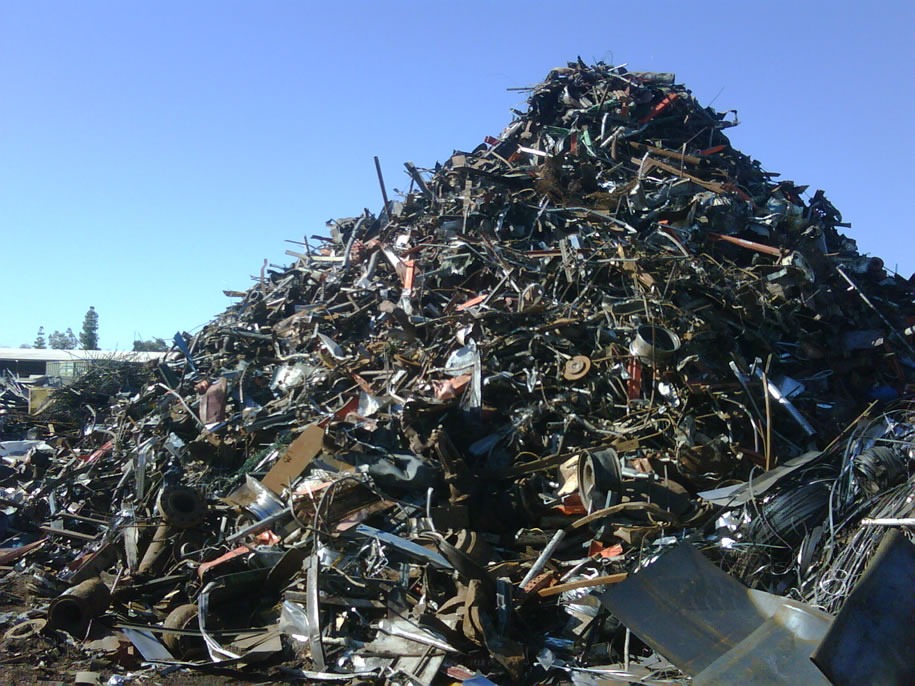For dumpster, container, and large loads please call
For dumpster, container, and large loads please call

Tackling a pile of pipe, wire, and hardware may take a little cleanup work, but it could also be a good source of cash when you know what you are looking at. Copper can hide under old paint, brass can be found in old valves and fixtures, and aluminum shows up in doors, signs, and pans. M&M Recycling is here to help you get the most value from your metal. If you want to know how to find the best materials, keep reading for tips on what to do for your next haul.
A small magnet is the fastest tool you can carry. Touch it to each piece. If it sticks hard, the item is iron or steel. That group matters because it sells by volume and weight at a lower price. If the magnet slides off, you are likely looking at copper, brass, aluminum, or stainless steel. Those metals bring better rates when they are clean and separated. Use weight as your second clue. Copper and brass feel heavy for their size. Aluminum feels light. Stainless sits in the middle and can surprise you with extra heft when it is thick or solid. Tap the piece with another metal and listen. A pure copper bar gives a deep ring. Cast aluminum gives a dull note. At the yard, any scrap metal company weighs ferrous metals separately from nonferrous metals. Sorting before you arrive speeds the visit and keeps the scale reading in your favor.
Copper rewards careful attention. Clean, bright copper wire and pipe usually sell at the best rate. Darkened copper still does well if it has no paint, solder, or heavy corrosion. When you are unsure, use a sharp edge to make a fresh scratch. The streak should glow reddish. If the scratch looks yellow, you may be holding brass. If it flashes silvery under a thin copper wash, it is a steel plate with a coating. Know the common grades. Bright bare copper is wire with all insulation removed. Number one copper includes clean pipe and wire with no solder or paint. Number two copper includes pipe with soldered joints, light paint, or residue from use. Keep these piles separate since grades pay differently. Pay attention to the wire, too. Thick stranded cable with flexible rubber insulation carries more copper by weight than thin electronics cords. Remove plugs and hardware. Leave aluminum wire in its own bin. Some power cables hide aluminum strands that look pale when scratched. Sorting ahead saves time during scrap metal recycling and protects the value of everything in the bin. Use buckets or boxes and write the metal name on each one.
Aluminum is everywhere. Screen doors, window frames, sign blanks, ladders, pots, and sheet goods all add up fast. It feels light and will not respond to a magnet. Look for stamps like 6061, 5052, or 3003. Those numbers point to alloy families that yards recognize. Cast aluminum looks grainy or porous and usually comes with thick, heavy parts. File a corner and it will look dull gray. Remove any steel bolts, hinges, or handles before you weigh in. Stainless steel is the clean, bright metal in kitchens and medical gear. Many grades do not pull to a magnet at all. Some grades stick lightly because of how they were formed. The scratch test shows a silver sheen with no yellow or red. Food service sinks and tables usually carry a sticker that mentions 18 and 8, which means chromium and nickel content. Yellow brass matches the color of a new door hinge. Red brass leans toward copper in tone. Spent cartridge brass, plumbing parts, and solid decorative hardware fall in these groups. Many handles look like brass at first, but are zinc or steel with a thin coating. A fresh file cut tells the truth. Zinc looks gray and crumbly. Keep brass shavings and small pieces in a tin so they don’t get lost. A scrap metal buyer pays by the pound and by grade, so clean pieces beat mixed assemblies. Remove rubber gaskets, plastic knobs, and steel pins when it is easy to do.
Motors are heavy for a reason. The windings inside are copper in many models. Pull motors from old appliances, compressors, and tools. The outer case is steel. Inside, you will find a stack of laminated steel plates and a tight bundle of copper wire. Some modern motors use aluminum windings. Scratch the wire to check the color. Transformers and ballasts look like small bricks wrapped in wire. Old magnetic ballasts from lighting can be heavy and contain oil. Your yard will tell you how to handle them. Newer electronic ballasts weigh less and sort with electronics. Cords are easy money when you keep grades separate. Extension cords and household appliance cords go together. Thick building wire goes in another bin. Data cables and coaxial cables carry less copper by weight. Electronics contain boards with small amounts of copper, aluminum, and precious metals. Gold-plated pins and edge connectors raise the grade on some boards. Keep motherboards, memory, power supplies, and wiring harnesses sorted. Remove batteries and bring them in a separate plastic tray.
You are now ready to turn unsorted scrap into clean, well-graded piles for scrap metal recycling in Smyrna. The steps above match what scale operators look for every day. Use them, build your routine, and your returns will show it. When you want a simple sale with a reliable scrap metal buyer, bring your sorted load to M&M Recycling. Our team offers fair pricing and fast unloading. Call today and let us help you get the most value from your metal.